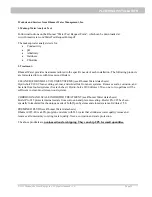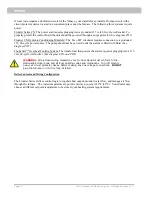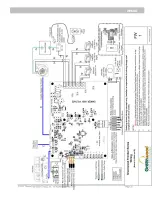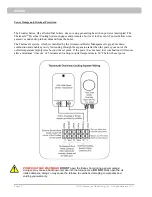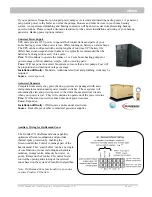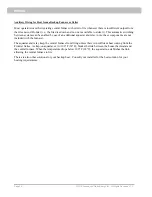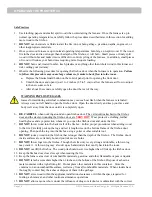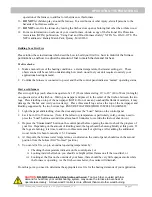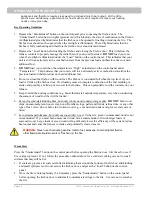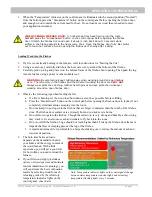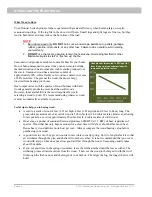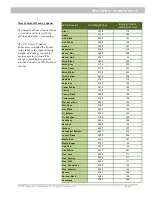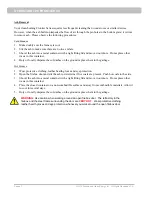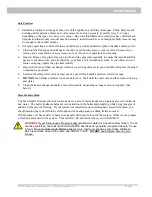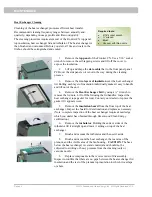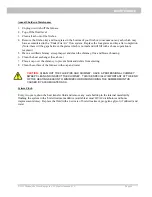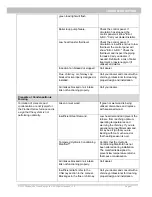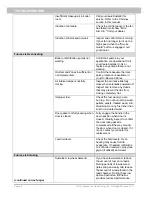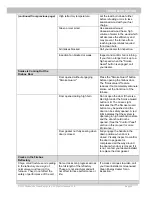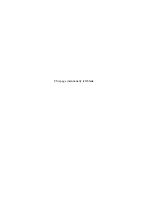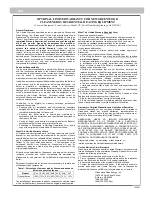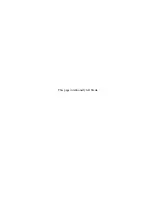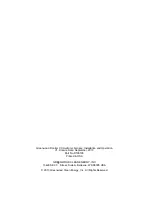
MAINTENANCE
© 2013 Greenwood Clean Energy, Inc All Rights Reserved V1.9
Page 43
MAINTENANCE
Safe Practices
1.
E
s
tablish a routine for storage of fuel, care of the appliance, and firing techniques. Check daily for ash
buildup until experience shows how often removal of ash is necessary (typically every 2-4 weeks
depending on the type of wood you are using). Be aware that different wood species have different ash
deposits and that weekly removal may be necessary in mild weather, even though monthly removal may
be enough in the coldest months.
2.
Everyone operating a solid fuel furnace should have a clearly understood plan to handle a chimney fire.
3.
Clean out the flue pipe and chimney at the end of each heating season, or more often if necessary, to
remove any accumulation of soot, creosote or ash. Do not use chemicals for cleaning.
4.
Inspect chimney, flue pipes, flue pipe joints, and flue pipe seals regularly to ensure that smoke and flue
gases are not drawn into, and circulated by, your home’s air circulation system. If you observe rust or
smoke escaping, replace the pipe immediately.
5.
Inspect that door and heat exchanger cleanout cover lid gaskets are in good condition. Replace if needed
to maintain a good seal.
6.
Exercise the safety relief valve at least once a year; lift the handle and allow water to escape.
7.
DO NOT
clean furnace surfaces when the unit is hot. Wait until the unit cools and then clean with soap
and water.
8.
Clean the heat exchanger annually or more frequently, depending on usage and wood quality. (See
below)
Heat Transfer Fluid
The heat transfer fluid used in the Frontier Series is a mix of boiler treatment, propylene glycol (if utilized)
and water. The boiler treatment helps prevent oxidation in the boiler and plumbing while propylene glycol
additive helps prevent freezing. If your system was installed in open (atmospheric pressure) fashion, you
should monitor the system fluid level throughout the heating season, adding fluid as needed.
If the furnace over fires and over heats, heat transfer fluid may boil out of the system. If this occurs, prepare
a fresh mix and add it to the system. Your installer will determine where you will add fluid.
WARNING:
If your furnace uses Propylene Glycol mixed with water as a heat transfer solution. It is an
odorless, tasteless, non-toxic liquid which the FDA describes as “generally recognized as safe” for use
in food. Do not confuse it with Ethylene Glycol, more commonly known as automotive antifreeze,
which is odorless, sweet to the taste; and HIGHLY TOXIC.
DO NOT
use Ethylene Glycol in your
furnace.
Summary of Contents for Frontier CX
Page 1: ......
Page 3: ...This page intentionally left blank...
Page 4: ......
Page 8: ...SAFETY Page 4 2013 Greenwood Clean Energy Inc All Rights Reserved V1 9 SAFETY WARNINGS LABEL...
Page 9: ...SAFETY 2013 Greenwood Clean Energy Inc All Rights Reserved V1 9 Page 5 LABEL LOCATIONS...
Page 30: ...PLUMBING INSTALLATION Page 26 2013 Greenwood Clean Energy Inc All Rights Reserved V1 9...
Page 35: ...WIRING 2013 Greenwood Clean Energy Inc All Rights Reserved V1 9 Page 31...
Page 54: ...WA This page intentionally left blank...
Page 56: ...This page intentionally left blank...

